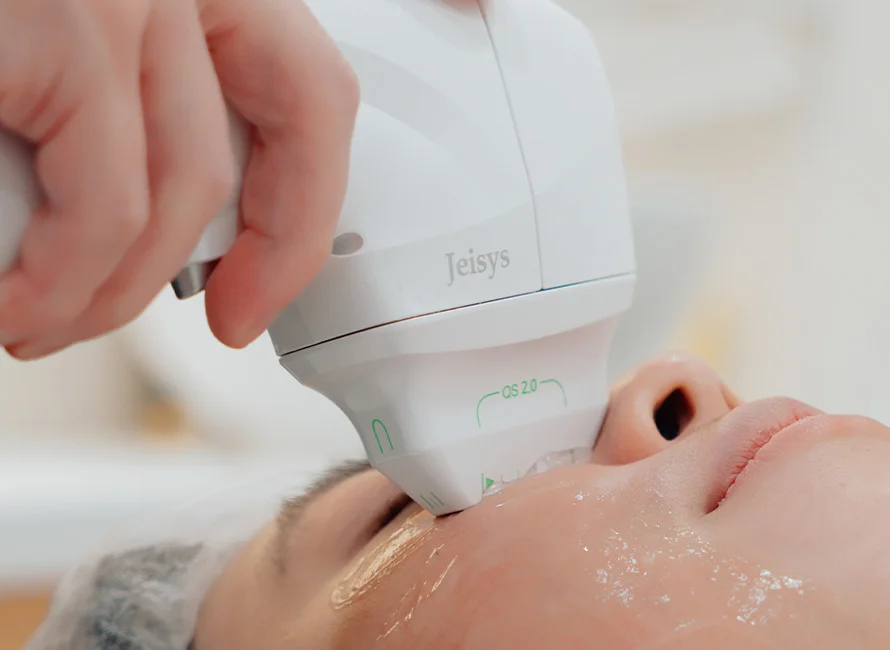HIFU Treatment: The Safe, Non-Invasive Path to Glowing Skin
High-Intensity Focused Ultrasound (HIFU) treatment has become an engaging alternative for those looking for non-invasive skin rejuvenation. This ingenious technology utilizes ultrasound waves to stimulate collagen manufacturing, successfully addressing problems such as skin laxity and indicators of aging. With its marginal downtime and customized method, HIFU satisfies a variety of individuals wanting to boost their skin's look. Nonetheless, the ins and outs of just how HIFU functions and its viability for various skin kinds warrant a closer examination, as comprehending these elements is critical for informed decision-making.
What Is HIFU Treatment?
High-Intensity Focused Ultrasound (HIFU) therapy has actually emerged as an innovative non-invasive treatment created to invigorate the skin and advertise an extra younger appearance. This ingenious treatment utilizes the power of ultrasound innovation to stimulate collagen production and enhance skin flexibility without the need for surgical treatment. HIFU has actually obtained popularity among individuals looking for effective skin tightening and training options.
HIFU treatment is specifically appealing due to its safety account and marginal downtime. Unlike standard facelifts, which usually need extensive healing periods and entail significant dangers, HIFU supplies a comfortable alternative that can be carried out in a medical setup. Individuals typically experience just light discomfort during the treatment, and many can resume their everyday tasks quickly later.
The adaptability of HIFU extends past visual improvement; it is additionally utilized in different medical applications. Its main focus stays in the realm of cosmetic dermatology, where it deals with issues such as sagging skin, great lines, and creases. As study proceeds to progress, HIFU treatment is solidifying its place as a valuable alternative for people seeking to achieve glowing, vibrant skin without invasive methods.

How HIFU Works
HIFU therapy runs by using focused ultrasound power to permeate the skin at different depths, specifically targeting the facial layers where collagen fibers live. This advanced strategy uses high-intensity focused ultrasound waves that generate warmth within the targeted cells, stimulating an all-natural recovery reaction. As the ultrasound power is provided, it triggers regulated thermal injury to the skin's much deeper layers, motivating the body to start a regenerative process.
The thermal result of HIFU activates collagen synthesis, which is vital for maintaining skin flexibility and firmness. Over time, this causes the renovation of collagen fibers, enhancing the general structure and look of the skin. The treatment can be tailored to deal with details areas of concern, such as sagging skin or fine lines, making it an efficient option for different skin types.
Unlike standard surgical techniques, HIFU offers a non-invasive option, considerably decreasing recovery time and possible complications. Individuals can generally go back to their daily activities immediately after the procedure. The accuracy of HIFU technology makes sure that bordering tissues continue to be unharmed, supplying a safe and targeted technique to skin restoration.
Advantages of HIFU
The benefits of HIFU treatment extend past its cutting-edge innovation, supplying a range of benefits for those looking go to my blog for skin restoration. Among the most noteworthy advantages is its non-invasive nature, which removes the demand for surgical procedures and substantial recuperation times. Patients can delight in considerable skin tightening up and training results without the linked risks of conventional facelifts.

Furthermore, HIFU advertises collagen manufacturing, an essential protein that adds to skin elasticity and firmness. As collagen levels climb, patients frequently experience enhanced skin appearance and a decrease in great lines and creases. This all-natural improvement leads to a youthful appearance that can last for months, if not years.
Furthermore, HIFU treatment is extremely personalized, permitting experts to customize the treatment to the certain demands and problems of each person. This tailored strategy makes best use of outcomes, making certain that every person obtains ideal care.
What to Expect During Therapy
During a HIFU treatment session, individuals can usually expect a period of 30 to 90 minutes, depending upon the area being targeted. HIFU. The treatment begins with a Going Here detailed assessment, where the practitioner examines the skin and discusses the person's goals. Hereafter, the skin is cleansed, and a topical anesthetic might be related to make certain comfort throughout the treatment
When the skin is prepared, an unique ultrasound gel is put on assist in the delivery of ultrasound energy. The HIFU tool is then placed, and the expert thoroughly targets the fixed areas. Individuals might experience a sensation of heat or moderate discomfort as the ultrasound energy passes through the skin, stimulating collagen production.
Throughout the therapy, practitioners constantly keep an eye on the patient's comfort degrees, readjusting setups as necessary. A lot of sessions are well-tolerated, and any kind of pain is generally brief. Post-treatment, people may discover minor soreness or swelling in the dealt with locations, which usually subsides within a few hours. Results can slowly enhance over a number of months as collagen remains to create, see leaving people with rejuvenated, radiant skin (HIFU).
Suitable Candidates for HIFU

Candidates ought to additionally have practical assumptions pertaining to end results; while HIFU can offer noticeable training and tightening, it is not a replacement for procedures. Individuals with certain medical problems, such as serious skin infections or open wounds in the therapy location, may not be ideal for HIFU. Those with particular skin types or conditions, such as serious acne or rosacea, ought to speak with a certified professional to identify if HIFU is ideal.
Furthermore, individuals that are pregnant or have a background of severe sensitive reactions to ultrasound treatment ought to avoid this therapy. Eventually, an extensive consultation with an accredited professional is important to assess individual health background and skin condition, making sure that HIFU is a secure and efficient alternative for achieving their visual objectives.
Conclusion
In final thought, HIFU therapy represents an encouraging non-invasive option for people looking for skin renewal. With minimal downtime and a customized approach, HIFU provides substantial benefits for those with moderate to modest skin laxity.